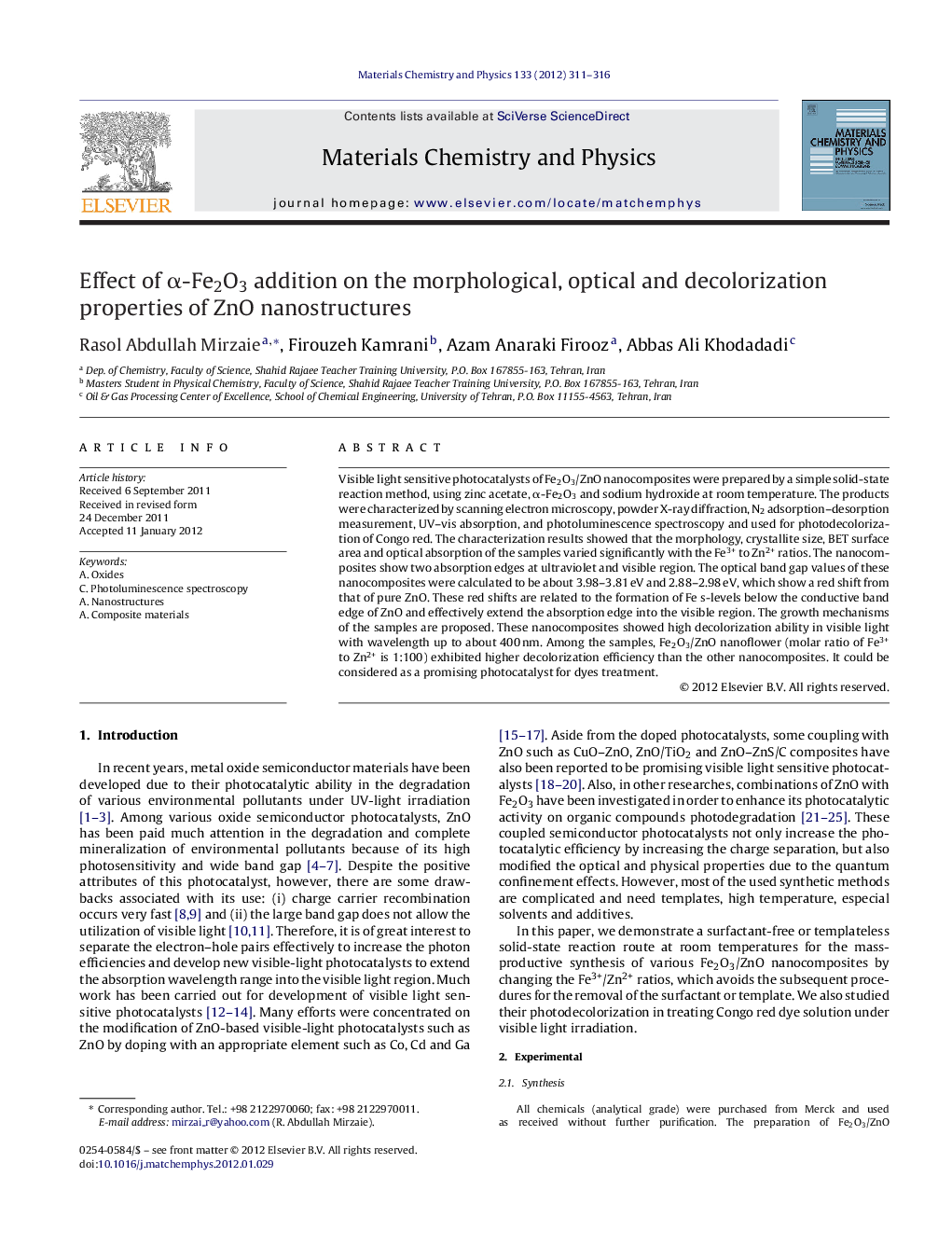| Article ID | Journal | Published Year | Pages | File Type |
|---|---|---|---|---|
| 1524213 | Materials Chemistry and Physics | 2012 | 6 Pages |
Visible light sensitive photocatalysts of Fe2O3/ZnO nanocomposites were prepared by a simple solid-state reaction method, using zinc acetate, α-Fe2O3 and sodium hydroxide at room temperature. The products were characterized by scanning electron microscopy, powder X-ray diffraction, N2 adsorption–desorption measurement, UV–vis absorption, and photoluminescence spectroscopy and used for photodecolorization of Congo red. The characterization results showed that the morphology, crystallite size, BET surface area and optical absorption of the samples varied significantly with the Fe3+ to Zn2+ ratios. The nanocomposites show two absorption edges at ultraviolet and visible region. The optical band gap values of these nanocomposites were calculated to be about 3.98–3.81 eV and 2.88–2.98 eV, which show a red shift from that of pure ZnO. These red shifts are related to the formation of Fe s-levels below the conductive band edge of ZnO and effectively extend the absorption edge into the visible region. The growth mechanisms of the samples are proposed. These nanocomposites showed high decolorization ability in visible light with wavelength up to about 400 nm. Among the samples, Fe2O3/ZnO nanoflower (molar ratio of Fe3+ to Zn2+ is 1:100) exhibited higher decolorization efficiency than the other nanocomposites. It could be considered as a promising photocatalyst for dyes treatment.
► Different morphologies of Fe2O3/ZnO nanocomposites synthesized via simple solid state reaction method. ► Various Fe3+/Zn2+ ratios affected on morphology, size and optical absorption. ► addition of Fe2O3 shifted the absorption edge to the visible region. ► Amount of added Fe2O3 strongly affected the decolorization of azo dye under visible light.
